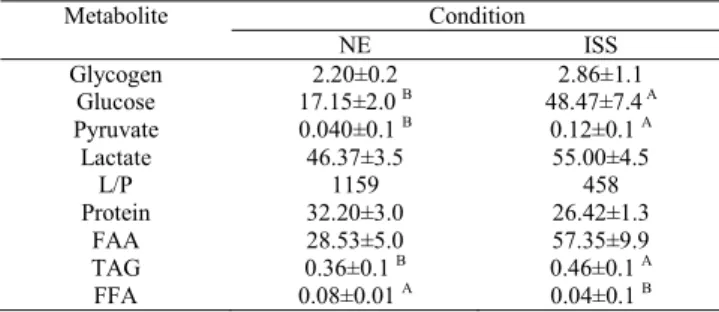Intermittent sustained swimming in ‘matrinxã’ Brycon amazonicus (Bryconidae: Bryconinae): hematological and metabolic responses
Texto
Imagem


Documentos relacionados
Two other important bodies that deal with the migration policy are the National Immigration Council (CNIg), responsible for formulating the policy by gathering
Este trabalho foi objeto de estudo para formação profissional, em que se procurou analisar o papel do IFPR campus Telêmaco Borba no Programa Nacional de Acesso ao
De acordo com os resultados obtidos no presente estudo, as condições que favoreceram o processo biodegradativo dos resíduos no ASCG, para a geração de biogás, durante
Moreover, it has never been stated what groups are or what groups are not true triatomines: Rhodniini and Triatomini are/ may be diphyletic, Triatoma species are/may be di-
Ramichloridium is a heterogeneous group of fungi including species with different lifestyles, such as saprobes and plant and human pathogens (Arzanlou et al., 2007).. Several
Embora outras espécies de cochonilhas, tais como Dysmicoccus brevipes (Cockerell, 1893), Geococcus coffeae (Green), Nipaecoccus coffeae (Hempel), Pseudococcus cryptus
Figura 2 Comprimento de raízes com diâmetros maiores que 2 mm, em metros, de mudas de cafeeiro Acaiá e Rubi obtidas por meio de enraizamento de estacas e por semeadura..
Resumo: Objetivos: verificar a confiabilidade do escore em um questionário de aptidão física autorrelatada (QAPA) em crianças de 6 a 11 anos, nas aulas de educação física